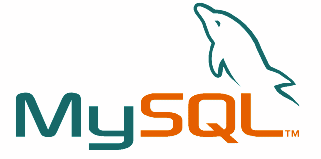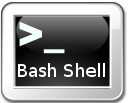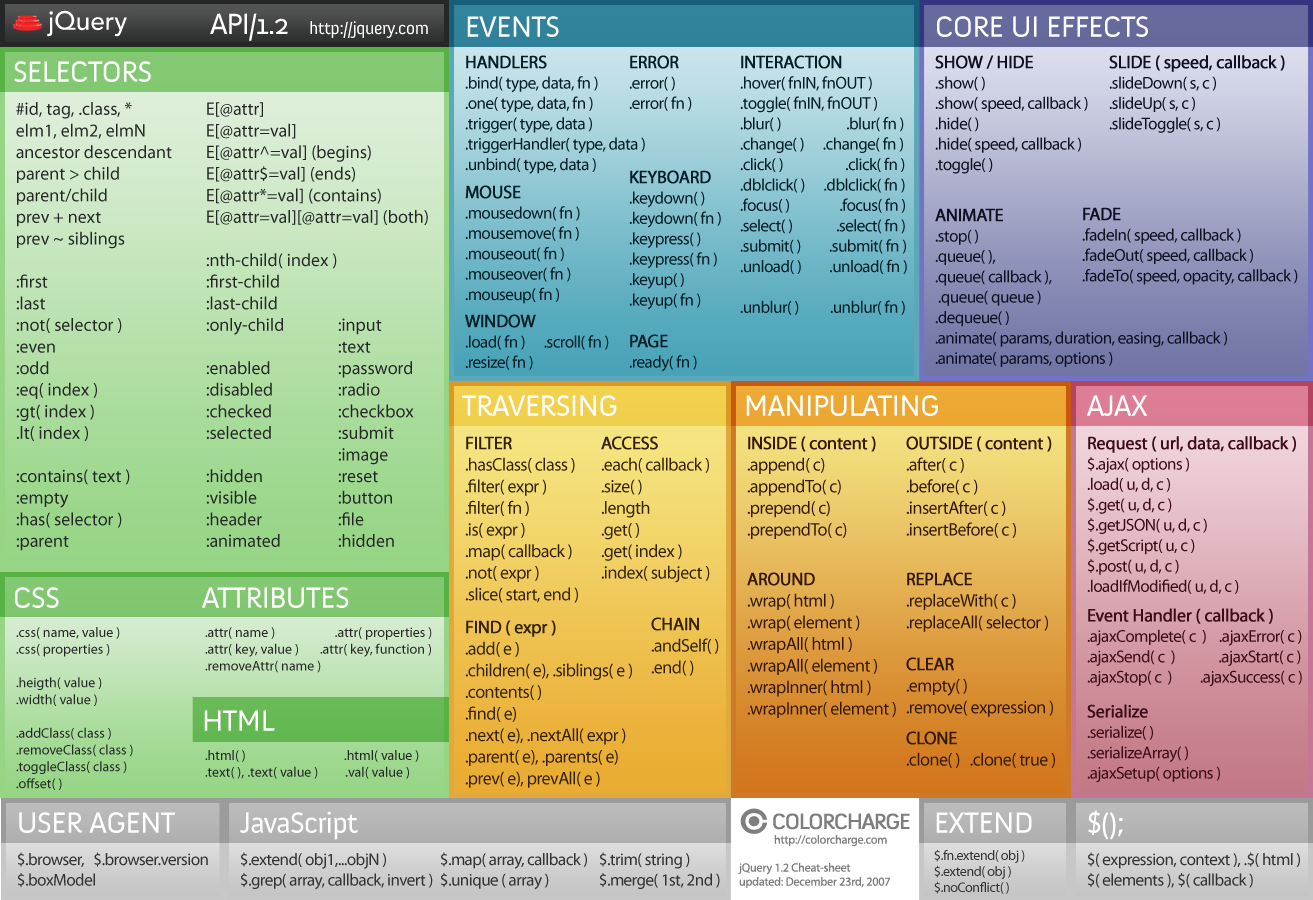 MySQL is one of the best and globally used database. It will be good to learn the basic commands in Mysql to work interactively with the website and database servers. It is an GPL software as well as paid version is available with support. MySQL uses Structured Query Language (SQL-pronounced sequel), here i have listed mostly used commands for requesting information from a database. Mysql sends each SQL statement that you issue to the server to be executed. Because of its fast performance, reliability, ease of use, and versatility in working with programming languages NASA, FedEx, Yahoo other big php application are using mysql as backend.
MySQL is one of the best and globally used database. It will be good to learn the basic commands in Mysql to work interactively with the website and database servers. It is an GPL software as well as paid version is available with support. MySQL uses Structured Query Language (SQL-pronounced sequel), here i have listed mostly used commands for requesting information from a database. Mysql sends each SQL statement that you issue to the server to be executed. Because of its fast performance, reliability, ease of use, and versatility in working with programming languages NASA, FedEx, Yahoo other big php application are using mysql as backend.
 This is a list of handy MySQL mysql-textboxs that I use time and time again. At the bottom are statements, clauses, and functions you can use in MySQL. Below that are PHP functions you can use to interface with MySQL.
This is a list of handy MySQL mysql-textboxs that I use time and time again. At the bottom are statements, clauses, and functions you can use in MySQL. Below that are PHP functions you can use to interface with MySQL.
Below when you see # it means from the unix shell. When you see mysql> it means from a MySQL prompt after logging into MySQL.
To login (from unix shell) use -h only if needed.
# [mysql dir]/bin/mysql -h hostname -u root -p
Create a database on the sql server.
mysql> create database [databasename];
List all databases on the sql server.
mysql> show databases;
Switch to a database.
mysql> use [db name];
To see all the tables in the db.
mysql> show tables;
To see database’s field formats.
mysql> describe [table name];
To delete a db.
mysql> drop database [database name];
To delete a table.
mysql> drop table [table name];
Show all data in a table.
mysql> SELECT * FROM [table name];
Returns the columns and column information pertaining to the designated table.
mysql> show columns from [table name];
Show certain selected rows with the value “whatever”.
mysql> SELECT * FROM [table name] WHERE [field name] = “whatever”;
Show all records containing the name “Bob” AND the phone number ‘3444444’.
mysql> SELECT * FROM [table name] WHERE name = “Bob” AND phone_number = ‘3444444’;
Show all records not containing the name “Bob” AND the phone number ‘3444444’ order by the phone_number field.
mysql> SELECT * FROM [table name] WHERE name != “Bob” AND phone_number = ‘3444444’ order by phone_number;
Show all records starting with the letters ‘bob’ AND the phone number ‘3444444’.
mysql> SELECT * FROM [table name] WHERE name like “Bob%” AND phone_number = ‘3444444’;
Show all records starting with the letters ‘bob’ AND the phone number ‘3444444’ limit to records 1 through 5.
mysql> SELECT * FROM [table name] WHERE name like “Bob%” AND phone_number = ‘3444444’ limit 1,5;
Use a regular expression to find records. Use “REGEXP BINARY” to force case-sensitivity. This finds any record beginning with a.
mysql> SELECT * FROM [table name] WHERE rec RLIKE “^a”;
Show unique records.
mysql> SELECT DISTINCT [column name] FROM [table name];
Show selected records sorted in an ascending (asc) or descending (desc).
mysql> SELECT [col1],[col2] FROM [table name] ORDER BY [col2] DESC;
Return number of rows.
mysql> SELECT COUNT(*) FROM [table name];
Sum column.
mysql> SELECT SUM(*) FROM [table name];
Join tables on common columns.
mysql> select lookup.illustrationid, lookup.personid,person.birthday from lookup left join person on
lookup.personid=person.personid=statement to join birthday in person table with primary illustration id;
Creating a new user. Login as root. Switch to the MySQL db. Make the user. Update privs.
# mysql -u root -p
mysql> use mysql;
mysql> INSERT INTO user (Host,User,Password) VALUES(‘%’,’username’,PASSWORD(‘password’));
mysql> flush privileges;
Change a users password from unix shell.
# [mysql dir]/bin/mysqladmin -u username -h hostname.blah.org -p password ‘new-password’
Change a users password from MySQL prompt. Login as root. Set the password. Update privs.
# mysql -u root -p
mysql> SET PASSWORD FOR ‘user’@’hostname’ = PASSWORD(‘passwordhere’);
mysql> flush privileges;
Recover a MySQL root password. Stop the MySQL server process. Start again with no grant tables.
Login to MySQL as root. Set new password. Exit MySQL and restart MySQL server.
# /etc/init.d/mysql stop
# mysqld_safe –skip-grant-tables &
# mysql -u root
mysql> use mysql;
mysql> update user set password=PASSWORD(“newrootpassword”) where User=’root’;
mysql> flush privileges;
mysql> quit
# /etc/init.d/mysql stop
# /etc/init.d/mysql start
Set a root password if there is on root password.
# mysqladmin -u root password newpassword
Update a root password.
# mysqladmin -u root -p oldpassword newpassword
Allow the user “bob” to connect to the server from localhost using the password “passwd”.
Login as root. Switch to the MySQL db. Give privs. Update privs.
# mysql -u root -p
mysql> use mysql;
mysql> grant usage on *.* to bob@localhost identified by ‘passwd’;
mysql> flush privileges;
Give user privilages for a db. Login as root. Switch to the MySQL db. Grant privs. Update privs.
# mysql -u root -p
mysql> use mysql;
mysql> INSERT INTO db (Host,Db,User,Select_priv,Insert_priv,Update_priv,Delete_priv,Create_priv,Drop_priv) VALUES
(‘%’,’databasename’,’username’,’Y’,’Y’,’Y’,’Y’,’Y’,’N’);
mysql> flush privileges;
or
mysql> grant all privileges on databasename.* to username@localhost;
mysql> flush privileges;
To update info already in a table.
mysql> UPDATE [table name] SET Select_priv = ‘Y’,Insert_priv = ‘Y’,Update_priv = ‘Y’ where [field name] = ‘user’;
Delete a row(s) from a table.
mysql> DELETE from [table name] where [field name] = ‘whatever’;
Update database permissions/privilages.
mysql> flush privileges;
Delete a column.
mysql> alter table [table name] drop column [column name];
Add a new column to db.
mysql> alter table [table name] add column [new column name] varchar (20);
Change column name.
mysql> alter table [table name] change [old column name] [new column name] varchar (50);
Make a unique column so you get no dupes.
mysql> alter table [table name] add unique ([column name]);
Make a column bigger.
mysql> alter table [table name] modify [column name] VARCHAR(3);
Delete unique from table.
mysql> alter table [table name] drop index [colmn name];
Load a CSV file into a table.
mysql> LOAD DATA INFILE ‘/tmp/filename.csv’ replace INTO TABLE [table name] FIELDS TERMINATED BY ‘,’ LINES TERMINATED BY ‘\n’ (field1,field2,field3);
Dump all databases for backup. Backup file is sql mysql-textboxs to recreate all db’s.
# [mysql dir]/bin/mysqldump -u root -ppassword –opt >/tmp/alldatabases.sql
Dump one database for backup.
# [mysql dir]/bin/mysqldump -u username -ppassword –databases databasename >/tmp/databasename.sql
Dump a table from a database.
# [mysql dir]/bin/mysqldump -c -u username -ppassword databasename tablename > /tmp/databasename.tablename.sql
Restore database (or database table) from backup.
# [mysql dir]/bin/mysql -u username -ppassword databasename < /tmp/databasename.sql
Create Table Example 1.
mysql> CREATE TABLE [table name] (firstname VARCHAR(20), middleinitial VARCHAR(3), lastname VARCHAR(35),suffix VARCHAR(3),officeid VARCHAR(10),userid
VARCHAR(15),username VARCHAR(8),email VARCHAR(35),phone VARCHAR(25), groups VARCHAR(15),datestamp DATE,timestamp time,pgpemail VARCHAR(255));
Create Table Example 2.
mysql> create table [table name] (personid int(50) not null auto_increment primary key,firstname varchar(35),middlename varchar(50),lastnamevarchar(50) default
‘bato’);
| MYSQL Statements and clauses |
String Functions |
Date and Time Functions |
| ALTER DATABASE
ALTER TABLE
ALTER VIEW
ANALYZE TABLE
BACKUP TABLE
CACHE INDEX
CHANGE MASTER TO
CHECK TABLE
CHECKSUM TABLE
COMMIT
CREATE DATABASE
CREATE INDEX
CREATE TABLE
CREATE VIEW
DELETE
DESCRIBE
DO
DROP DATABASE
DROP INDEX
DROP TABLE
DROP USER
DROP VIEW
EXPLAIN
FLUSH
GRANT
HANDLER
INSERT
JOIN
KILL
LOAD DATA FROM MASTER
LOAD DATA INFILE
LOAD INDEX INTO CACHE
LOAD TABLE…FROM MASTER
LOCK TABLES
OPTIMIZE TABLE
PURGE MASTER LOGS
RENAME TABLE
REPAIR TABLE
REPLACE
RESET
RESET MASTER
RESET SLAVE
RESTORE TABLE
REVOKE
ROLLBACK
ROLLBACK TO SAVEPOINT
SAVEPOINT
SELECT
SET
SET PASSWORD
SET SQL_LOG_BIN
SET TRANSACTION
SHOW BINLOG EVENTS
SHOW CHARACTER SET
SHOW COLLATION
SHOW COLUMNS
SHOW CREATE DATABASE
SHOW CREATE TABLE
SHOW CREATE VIEW
SHOW DATABASES
SHOW ENGINES
SHOW ERRORS
SHOW GRANTS
SHOW INDEX
SHOW INNODB STATUS
SHOW LOGS
SHOW MASTER LOGS
SHOW MASTER STATUS
SHOW PRIVILEGES
SHOW PROCESSLIST
SHOW SLAVE HOSTS
SHOW SLAVE STATUS
SHOW STATUS
SHOW TABLE STATUS
SHOW TABLES
SHOW VARIABLES
SHOW WARNINGS
START SLAVE
START TRANSACTION
STOP SLAVE
TRUNCATE TABLE
UNION
UNLOCK TABLES
USE |
AES_DECRYPT
AES_ENCRYPT
ASCII
BIN
BINARY
BIT_LENGTH
CHAR
CHAR_LENGTH
CHARACTER_LENGTH
COMPRESS
CONCAT
CONCAT_WS
CONV
DECODE
DES_DECRYPT
DES_ENCRYPT
ELT
ENCODE
ENCRYPT
EXPORT_SET
FIELD
FIND_IN_SET
HEX
INET_ATON
INET_NTOA
INSERT
INSTR
LCASE
LEFT
LENGTH
LOAD_FILE
LOCATE
LOWER
LPAD
LTRIM
MAKE_SET
MATCH AGAINST
MD5
MID
OCT
OCTET_LENGTH
OLD_PASSWORD
ORD
PASSWORD
POSITION
QUOTE
REPEAT
REPLACE
REVERSE
RIGHT
RPAD
RTRIM
SHA
SHA1
SOUNDEX
SPACE
STRCMP
SUBSTRING
SUBSTRING_INDEX
TRIM
UCASE
UNCOMPRESS
UNCOMPRESSED_LENGTH
UNHEX
UPPER |
ADDDATE
ADDTIME
CONVERT_TZ
CURDATE
CURRENT_DATE
CURRENT_TIME
CURRENT_TIMESTAMP
CURTIME
DATE
DATE_ADD
DATE_FORMAT
DATE_SUB
DATEDIFF
DAY
DAYNAME
DAYOFMONTH
DAYOFWEEK
DAYOFYEAR
EXTRACT
FROM_DAYS
FROM_UNIXTIME
GET_FORMAT
HOUR
LAST_DAY
LOCALTIME
LOCALTIMESTAMP
MAKEDATE
MAKETIME
MICROSECOND
MINUTE
MONTH
MONTHNAME
NOW
PERIOD_ADD
PERIOD_DIFF
QUARTER
SEC_TO_TIME
SECOND
STR_TO_DATE
SUBDATE
SUBTIME
SYSDATE
TIME
TIMEDIFF
TIMESTAMP
TIMESTAMPDIFF
TIMESTAMPADD
TIME_FORMAT
TIME_TO_SEC
TO_DAYS
UNIX_TIMESTAMP
UTC_DATE
UTC_TIME
UTC_TIMESTAMP
WEEK
WEEKDAY
WEEKOFYEAR
YEAR
YEARWEEK |
|
|
|
|
|
|
| Mathematical and Aggregate Functions |
Flow Control Functions/Command-Line Utilities |
PHP API – using functions built into PHP with MySQL |
| ABS
ACOS
ASIN
ATAN
ATAN2
AVG
BIT_AND
BIT_OR
BIT_XOR
CEIL
CEILING
COS
COT
COUNT
CRC32
DEGREES
EXP
FLOOR
FORMAT
GREATEST
GROUP_CONCAT
LEAST
LN
LOG
LOG2
LOG10
MAX
MIN
MOD
PI
POW
POWER
RADIANS
RAND
ROUND
SIGN
SIN
SQRT
STD
STDDEV
SUM
TAN
TRUNCATE
VARIANCE |
CASE
IF
IFNULL
NULLIF
Command-Line Utilities
comp_err
isamchk
make_binary_distribution
msql2mysql
my_print_defaults
myisamchk
myisamlog
myisampack
mysqlaccess
mysqladmin
mysqlbinlog
mysqlbug
mysqlcheck
mysqldump
mysqldumpslow
mysqlhotcopy
mysqlimport
mysqlshow
perror |
mysql_affected_rows
mysql_change_user
mysql_client_encoding
mysql_close
mysql_connect
mysql_create_db
mysql_data_seek
mysql_db_name
mysql_db_query
mysql_drop_db
mysql_errno
mysql_error
mysql_escape_string
mysql_fetch_array
mysql_fetch_assoc
mysql_fetch_field
mysql_fetch_lengths
mysql_fetch_object
mysql_fetch_row
mysql_field_flags
mysql_field_len
mysql_field_name
mysql_field_seek
mysql_field_table
mysql_field_type
mysql_free_result
mysql_get_client_info
mysql_get_host_info
mysql_get_proto_info
mysql_get_server_info
mysql_info
mysql_insert_id
mysql_list_dbs
mysql_list_fields
mysql_list_processes
mysql_list_tables
mysql_num_fields
mysql_num_rows
mysql_pconnect
mysql_ping
mysql_query
mysql_real_escape_string
mysql_result
mysql_select_db
mysql_stat
mysql_tablename
mysql_thread_id
mysql_unbuffered_query |
|
|
|
 Shell scripts are short programs that are written in a shell programming language and interpreted by a shell process. They are extremely useful for automating tasks on Linux and other Unix-like operating systems.
Shell scripts are short programs that are written in a shell programming language and interpreted by a shell process. They are extremely useful for automating tasks on Linux and other Unix-like operating systems.

 Debugging PHP code is challenging task for all Php developers, however some simple php debugging techniques can help you to code faster and thus save very valuable coding time.
Debugging PHP code is challenging task for all Php developers, however some simple php debugging techniques can help you to code faster and thus save very valuable coding time.
 MySQL is one of the best and globally used database. It will be good to learn the basic commands in Mysql to work interactively with the website and database servers. It is an GPL software as well as paid version is available with support. MySQL uses Structured Query Language (SQL-pronounced sequel), here i have listed mostly used commands for requesting information from a database. Mysql sends each SQL statement that you issue to the server to be executed. Because of its fast performance, reliability, ease of use, and versatility in working with programming languages NASA, FedEx, Yahoo other big php application are using mysql as backend.
MySQL is one of the best and globally used database. It will be good to learn the basic commands in Mysql to work interactively with the website and database servers. It is an GPL software as well as paid version is available with support. MySQL uses Structured Query Language (SQL-pronounced sequel), here i have listed mostly used commands for requesting information from a database. Mysql sends each SQL statement that you issue to the server to be executed. Because of its fast performance, reliability, ease of use, and versatility in working with programming languages NASA, FedEx, Yahoo other big php application are using mysql as backend.
